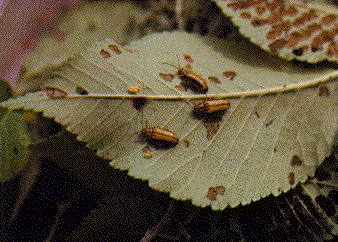
MEMPHIS: 901-854-3970
Serving Memphis, Nashville, Chattanooga and the Surrounding Areas
Timberline Tree & Lawn Care, INC. is proud to be a division of Bartlett Tree Experts, and our staff now has the backing of an international tree care company and research laboratory to help continue providing excellent tree service throughout Lawrence, Shelby, McCraken, Fayette, Dyer, and Mississippi counties. View a complete list of professional tree services offered by Bartlett.

Tree Insects

Aphids
Aphids are the most common insect found on trees, shurbs, and ornamentals. They feed by sucking the sap from there host plant. If not treated the plant can expiernce wilting, leaf curling, and even a die back of shoots. The best way to prevent Aphids would be to spray your plant with a dorment or horticulture oil.
Bagworm

Bagworm
Most common in the southern part of the United States where populations can grow rapidly. Bagworms love to feed on conifers but can also attack hardwood trees such as crabapple, maple, sycamore, poplar, and many others. The best time to treat with insecticides is in early to mid-June when larvae are young and more susceptible. Larger larvae are much tougher to kill.

Eastern-Tent Catapiller

Elm Bark Beetle
Populations fluctuate from year to year, with outbreaks occurring every several years. Defoliation of trees, building of unsightly silken nests in trees, and wandering caterpillars crawling over plants, walkways, and roads cause this insect to be a pest in the late spring and early summer. Eastern tent caterpillar nests are commonly found on wild cherry, apple, and crabapple, but may be found on hawthorn, maple, cherry, peach, pear, and plum as well.
The first sign of attack is the accumulation of boring dust around the base of the tree. The native elm bark beetle undergoes a period of feeding on healthy elms before seeking a dying tree for gallery construction and brood production, which provides an opportunity for adults to transmit the Dutch elm disease pathogen to uninfected elms.The smaller European elm bark beetle and the banded elm bark beetle are serious pests of native and introduced elms.

Elm Leaf Beetle

Gouty Oak Gall
Elm leaf beetles feed on elm tree leaves. During heavy infestations, leaf chewing affects the appearance of elm trees.Elm leaf beetles may be serious nuisance problems when they enter homes to overwinter. They may become active during warm periods until they move outdoors or die. Spray with insecticides to control elm leaf beetles.
Galls are abnormal plant growth or swellings comprised of plant tissue. Galls are usually found on foliage or twigs. These unusual deformities are caused by plant growth-regulating chemicals or stimuli produced by an insect. Chemical control is seldom suggested for management of leaf galls on oak. Cultural methods of control may be effective in reducing the impact of these insects.

Japanese Beetle

Lace Bug
Japanese beetle adults chew flower blossoms and leaves of many commonly grown plants. Japanese beetle larvae can be controlled with certain insecticides or by insect parasitic nematodes.
The most significant species of lace bugs that attack ornamental trees, shrubs and grasses are in the genera Stephanitis. Treatment of infested plants in early spring during the development of the first generation of lace bugs may reduce the number of insecticide applications needed to control heavy populations.

Leafminer

Phylloxera Gall
A leaf miner is the larva of an insect that lives in and eats the leaf tissue of plants. Although leafminer injuries are conspicuous, most leafminers produce injuries that have little, if any, effect on plant health. Insecticides applied when leafminers lay eggs are useful for control of many leafminers
The pecan phylloxera, which attacks pecan shoots and fruit, can destroy an entire nut crop and severely weaken and disfigure limb and shoot growth. The weakened and infested shoots tend to sap the tree's vitality and reduce subsequent production. The other species, which attack leaves, cause less damage but heavy infestations can cause some defoliation.
Sawfly
Spidermites


Sawflies are one of the few insects in the wasp family that feed on plants. The adult resembles a fly or a wasp without a constricted waist. But it's the worm-like larva that causes damage to plants. The adults do not eat and cannot sting.
Spider mites are common plant pests. Symptoms of injury include flecking, discoloration (bronzing) and scorching of leaves. Injury can lead to leaf loss and even plant death. Irrigation and moisture management can be important cultural controls for spider mites.

